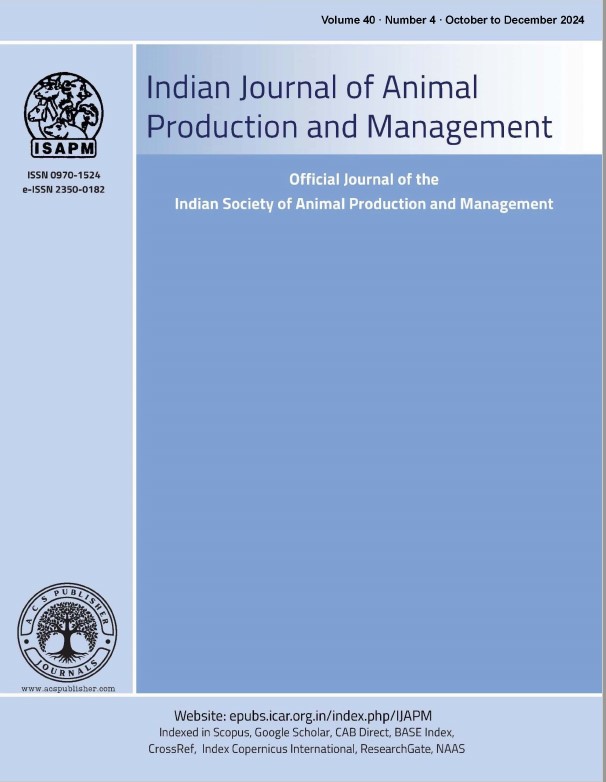EFFECT OF SOCIAL GROUPS AND FLOCK SIZE ON ECONOMIC RETURNS FROM TRADITIONAL GOAT REARING IN SOUTH GUJARAT
Keywords:
Caste, Economics, Flock size, Man days, Net return, Rainfall zone, Surti goatAbstract
A field survey of 150 goat keepers registered under AICRP on goat (Surti field unit) from nineteen villages of four districts of South Gujarat was carried out during year 2011 to find the effects of social group and flock size on economic returns from traditional goat rearing in study area. Farmers were selected using proportionate random sampling method. The information on general characteristics of goat keepers, their source of expenditures and earnings were collected tabulated and analyzed using standard statistical tools. Analysis revealed that the Ahir caste (82.4%) was principle goat keepers found in South Gujarat High Rainfall Zone and owned 89.5% of large flocks, whereas in South Gujarat Medium Rainfall Zone majority goat keepers were Muslims (66.2%) maintaining mainly medium (44.2%) and small (41.9%) sized flocks. The average flock size observed in study was 25.42 goats. The majority of them were marginal farmers (47.3%). The study of economics of goat farming revealed that the overall percent expenditure on labours, feed & fodder, treatment , interest and depreciation , was 73.54, 22.04, 2.09, 1.28 and 1.04 respectively. The percent return from sales of milk, animals and manure was 48, 46 and 6 respectively. These economical parameters were found to be highly significant (P<0.01) between flock sizes and castes. The net return obtained was in the ratio of 5.31 : 2.68 : 1.00 by Ahirs : Muslims : Others and 5.49 : 2.18 : 1.00 in Large: Medium : Small flocks. The net return per goat had also shown similar trend. The goat farming with larger flocks followed by Ahirs under traditional production system was found significantly more profitable in compare to goat farming involving small to medium sized flocks followed by others and Muslims in South Gujarat.

